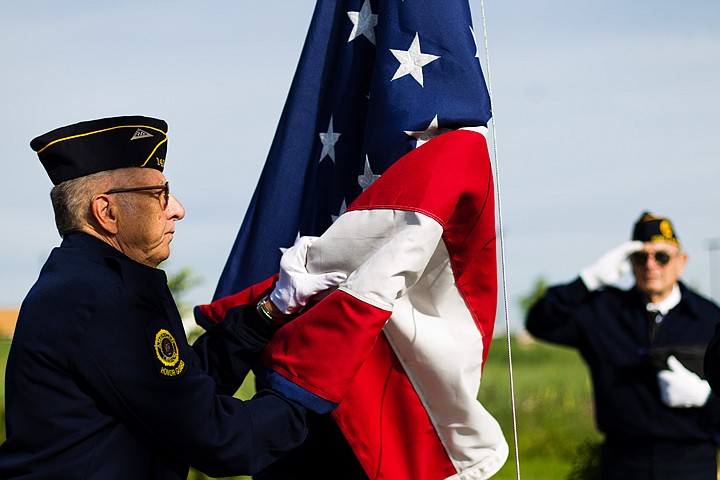Stars and stripes 'a living thing'
More than two centuries ago today, the Continental Congress adopted the Stars and Stripes. Until that day in 1777 the British Union Jack flew over the land; the new Americans needed a national symbol.
Flags worldwide evoke deep feelings, delivering many to the point of tears. For me it's the national anthem that does that, but the reason is the same: An appreciation for what this nation affords us all, an awareness that few in the world are as fortunate, as free, as are we.
Sure, it's a piece of cloth - cotton or nylon - made like any other. But humans cherish their symbols; they reflect complex emotions - the ability to ascribe meaning to material things. Grandma's hand-knit sweater, wedding rings, a first teddy bear, baby teeth; that these are priceless requires no explanation. The meaning ascribed to national symbols can run as deep. Unlike sentiment for items known only to loved ones, these are shared with strangers of today, yesterday, and tomorrow.
So it's no wonder that after periods of public concern and confusion regarding the flag's handling, in 1942 Congress added the U.S. Flag Code to federal law. The code incorporates provisions first adopted at the 1923 and 1924 National Flag Conferences, attended by the U.S. Army, Navy and more than 60 other groups. Later, the national anthem was added to the Flag Code.
This code provides guidelines for the display, use, and retirement of flags. It is advisory and does not ascribe any penalties. While a federal criminal penalty once existed for destroying the flag in protest, in 1989 this was ruled unconstitutional under free speech doctrines.
States have also added their own rules to supplement these and other Flag Code provisions:
* During the pledge and anthem when the flag is displayed, all present except military (who have separate guidelines, depending on whether in uniform) should stand facing the flag with right hand over heart.
* Display from sunrise to sunset on buildings and flagstaffs; night displays for "patriotic effect" if properly illuminated. Do not display during inclement weather, unless it is an all-weather flag.
* Hoist it briskly and lower ceremoniously.
* A flag should be displayed daily near public buildings, schoolhouses, and at polling places on election days.
* If on a parade float, it should be on a staff, or if positioned against a wall/window, with the union (blue) to the observer's left.
* The flag should not be draped over the hood, top, sides, or back of a vehicle (but may be fixed to the fender or chassis).
* If displayed with another flag, the U.S. flag should be above or to the right (except during Navy church services).
* No part of the flag should be a costume or uniform.
* When "in such condition that it is no longer a fitting emblem for display, (the flag) should be destroyed in a dignified way, preferably by burning."
There are many more guidelines now in Title 4 of U.S. Code (formerly in Title 36), which you can read at Law.Cornell.Edu (more user-friendly) or USCode.House.Gov. This one sums up the intent:
"The flag represents a living country and is itself considered a living thing." - Ti. 4 U.S.C. Sec. 8 (j)
Sholeh Patrick is a columnist for the Hagadone News Network. Email Sholehjo@hotmail.com.

